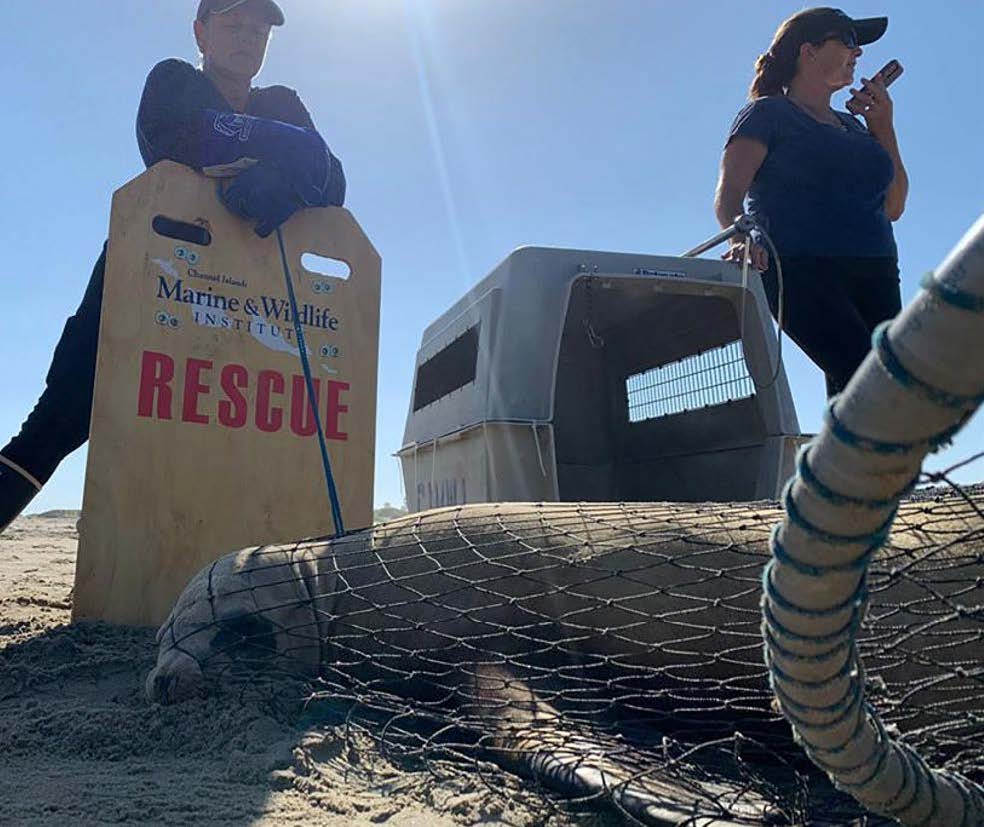Study examines how marine mammals are affected by summer HABs toxin exposure

SCCWRP and its partners have launched a yearlong study to document the severity of a harmful algal blooms (HABs) event that sickened hundreds of sea lions and other marine mammals in August and September – an effort that that will help researchers better understand and predict the ecological consequences of these seasonally disruptive blooms.
The study, which featured an intensive, six-week offshore sampling effort that wrapped up in mid-September, will focus on domoic acid, a neurotoxin produced by a ubiquitous HAB organism known as Pseudo-nitzschia. Marine mammals exposed to elevated levels of domoic acid can experience seizures, disorientation and even death.
During the investigation, researchers will explore a potential link between the offshore domoic acid data and more than 250 marine mammals that were reported stranded on Southern California beaches in August and September. The project’s goal is to refine a set of modeling tools that can predict the locations and severity of neurotoxin-producing blooms, as well as the likelihood of marine mammals becoming stranded on the beach as a result of neurotoxin exposure.
During major bloom events, marine mammal rescue centers – which are mostly volunteer-driven operations – struggle to keep up with dramatic spikes in marine mammal strandings on beaches across Central and Southern California. Generally, about 40%-60% of all stranded mammals can recover if rescue teams are able to administer appropriate anti-seizure medications and/or get them moved from populated beaches to local rehabilitation centers.
Pseudo-nitzschia and other HABs organisms are becoming increasingly commonplace and increasing in intensity in lockstep with climate change. Researchers are working to document the magnitude of the problem – including the extent to which marine mammals are adversely affected – and to help managers develop science-informed response and mitigation strategies.
Researchers last had the opportunity to collect offshore domoic acid data during a major Pseudo-nitzschia bloom in 2017. At the time, water-quality data were paired with strandings data from just one marine mammal rescue center.
The 2022 bloom event response involved four research cruises and strandings data from four marine mammal rescue centers. The marine mammal centers collected urine and other fluid samples from the stranded animals to confirm neurotoxin poisoning and measure domoic acid levels.
Researchers will use these new data sets to improve understanding of how to predict domoic acid-producing bloom events at the earliest possible stages, as well as how the bloom will spread and how vulnerable marine life will be adversely affected.
Marine mammal rescue centers intend to use the predictive tools to better prepare for future seasonal beach strandings, while water-quality managers will use the insights to develop mitigation and management strategies that match the scope and scale of the ecological threat.
The new HABs data collected offshore also will help contextualize existing nearshore data. Much of the HABs data being collected along the coastline have historically occurred in the areas closest to the shoreline. For example, California’s Harmful Algal Bloom Monitoring and Alert Program (HABMAP) has been collecting coastal HABs data for more than a decade via weekly sampling at piers statewide.
For more information, contact Dr. Jayme Smith.
More news related to: Eutrophication, Harmful Algal Blooms, Top News